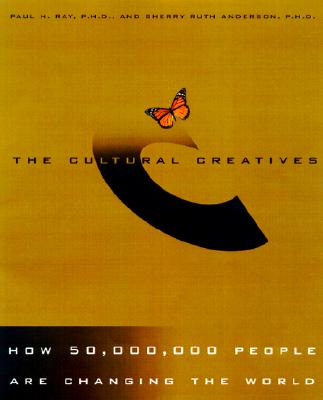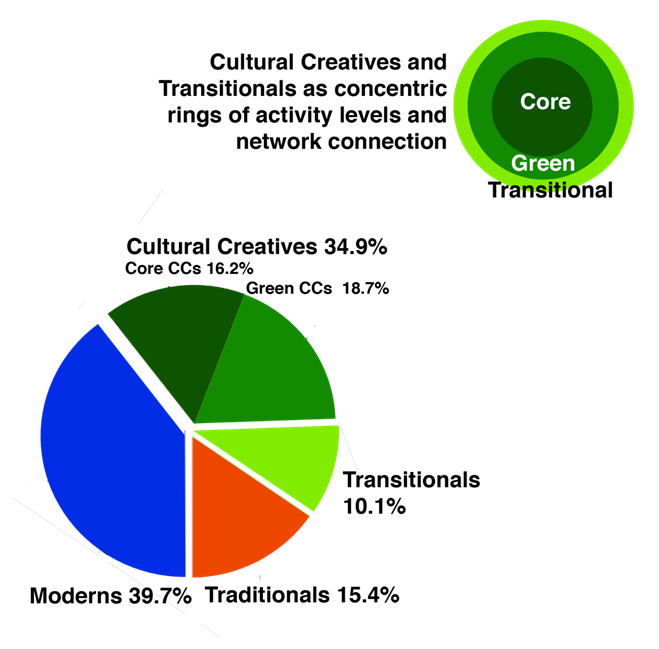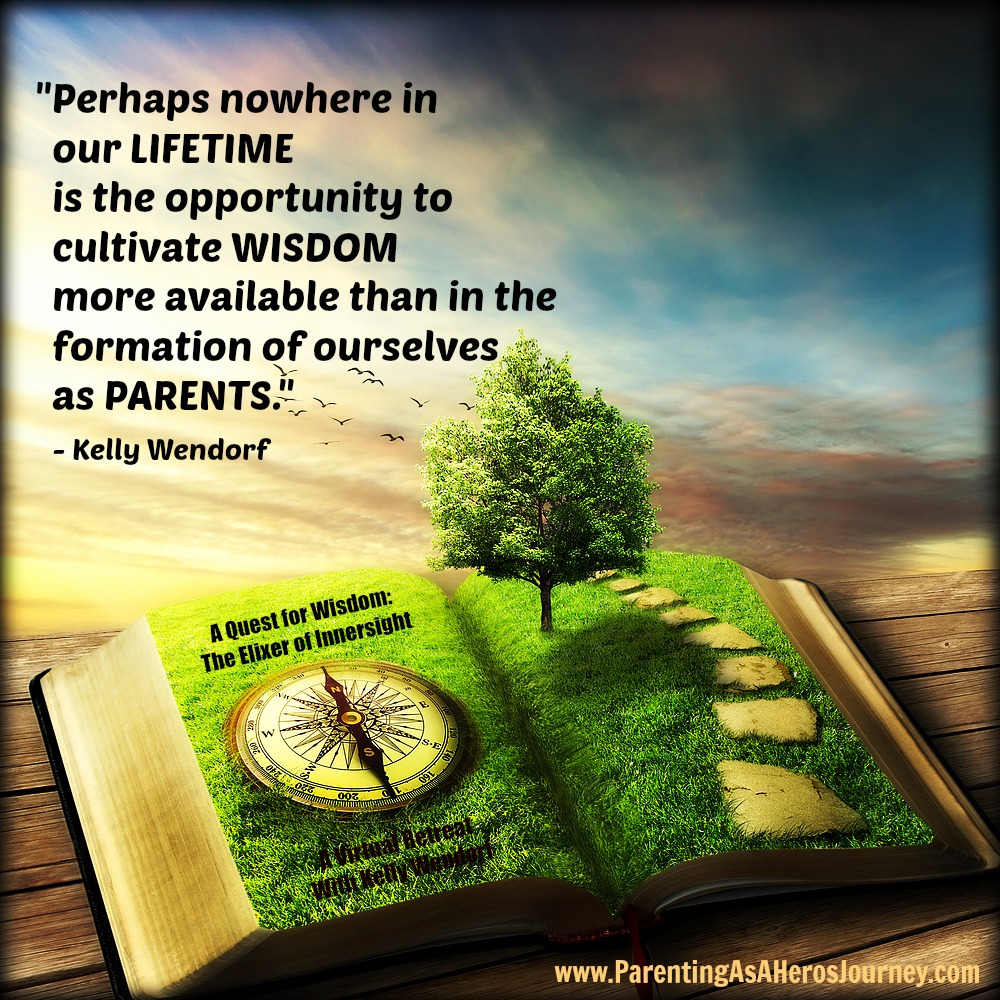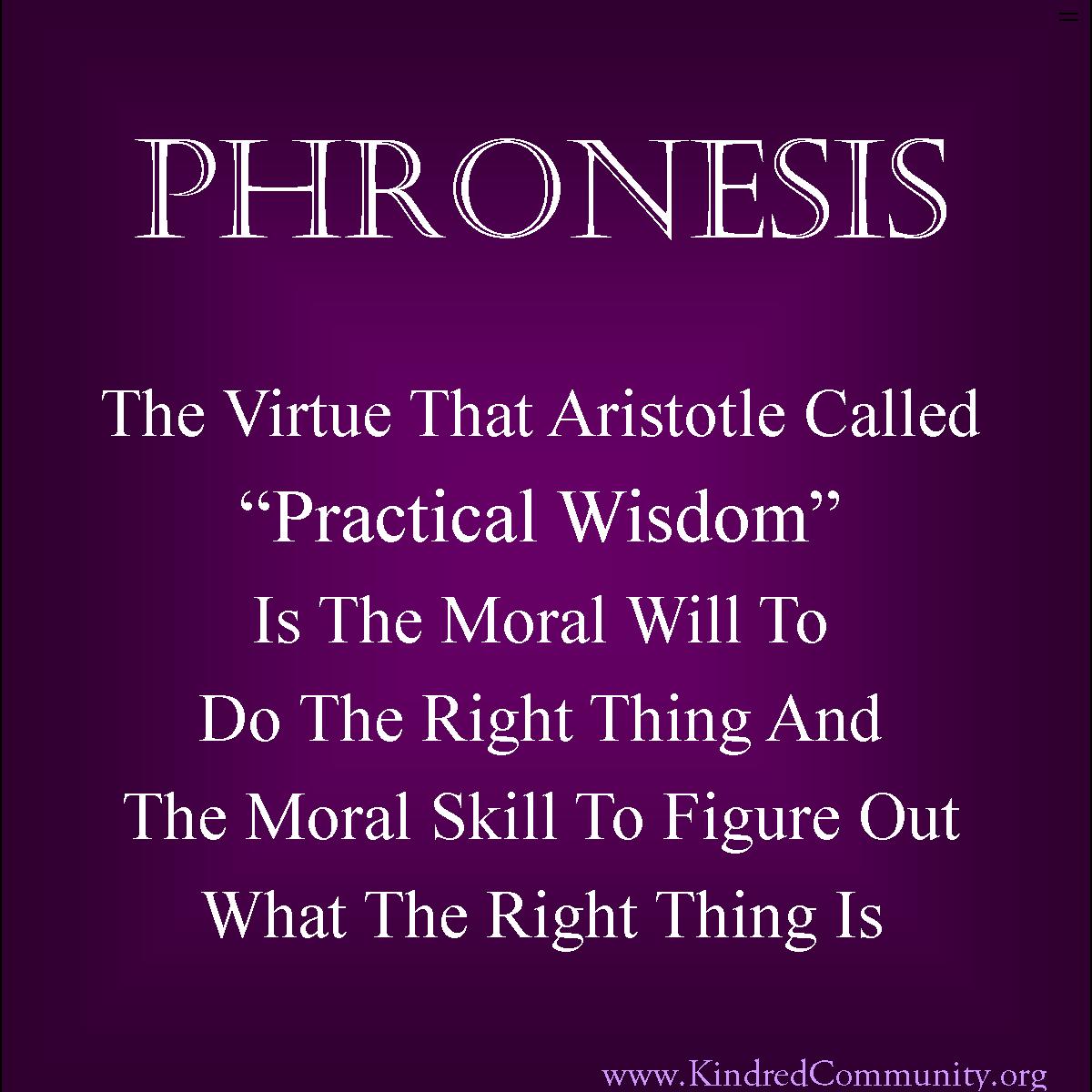Same Planet, Different Worlds: How Cultural Creatives Are Bringing Forward the Practical Wisdom of Conscious Living
Download and Listen to the Kindred Fireside Chat with Paul Ray, PhD:
Same Planet, Different Worlds:
How Cultural Creatives Are Transcending Alienation And Isolation To Bring Forward The Practical Wisdom of Conscious Living
An Interview with Social Scientist, Paul Ray, PhD
In this interview with social scientist, Paul Ray, PhD, Lisa Reagan connects the dots between her insights from 15 years of holistic family wellness advocacy and Ray’s investigation of a growing segment of Western population that is transforming mainstream culture through their ability to synthesize vast amounts of information, make counter-culture choices for sustainability and wellness, and ultimately bring forward a missing but critically needed worldview for 21st century living: practical wisdom, called PHRONESIS in the ancient world.

Ray presented his research findings in the book, Cultural Creatives: How 50 Million People Are Changing the World in 2000, with his wife and co-author, Sherry Anderson, PhD. In this interview, Ray shares his updated findings from a 2008 study of Cultural Creatives and peeks into his forthcoming book on this missing element of practical wisdom/PHRONESIS.
Ray shares why it is vital that Cultural Creatives connect with one another and recognize they are participating in a consciousness-raising movement whose impact will not be reported in the mainstream media, but is measurable by any social scientist who cares to look. He connects the civil rights movement and women’s rights to the human rights embedded in and explored by advocates and practitioners of conscious parenting.
Identified as a growing and powerful market force, Cultural Creatives inspire the founding of LOHAS, Lifestyles of Health and Sustainability, that studies their economic impact. As LOHAS states, “Research shows that one in four adult Americans is part of this group—nearly 41 million people. These consumers are the future of your business and also the future of progressive social, environmental and economic change in this country. But their power as a consumer market remains virtually untapped.”
Find white papers and marketing reports from LOHAS on Cultural Creatives here.
Cultural Creatives: Who We Are
Lisa: When I became an accidental conscious living advocate 15 years ago, families in my community came together to talk about holistic wellness: where are the resources, support and information we need to make these choices? How are we going to do this for ourselves?
It was overwhelming in the beginning of this process because few of us understood that wellness was wholeness and wholeness, or holistic thinking, was not supported in our fragmented, industrial culture.
At the time, we had to have organic and gluten-free foods trucked in through co-ops. Homeschoolers and homebirthers were on the target of social services and threatened with having their children taken away from them. Chiropractors and naturopaths were sought after and quickly became the most reliable sources of information and support.
I remember the overriding feeling when we got together to talk was a feeling of confusion and surprise that we would have to work this hard to create wellness and make informed choices for our families. It took years to figure out that our meetings in churches, homes and community centers to sort out our mission and to devise strategies to advocate for ourselves defined us as a movement. In fact, your book shows clearly that our efforts to bring into our culture what was missing and the struggle we endured because our values were not reflected back to us, meant that we were not just any movement, but a consciousness-raising movement.
“It took years to figure out that our meetings in churches, homes and community centers to sort out our mission and to devise strategies to advocate for ourselves defined us as a movement. In fact, your book shows clearly that our efforts to bring into our culture what was missing and the struggle we endured because our values were not reflected back to us, meant that we were not just any movement, but a consciousness-raising movement.” — Lisa Reagan
Only in hindsight can I see that it took years of sharing our personal experiences enough with each other to develop a counter reality to the fragmented factoids fed to us by media. It was probably a decade before there was coherence around what exactly this consciousness-raising movement that supports holistic family wellness in an industrial country – that, by the way, ranks at the bottom of all developed countries for maternal, infant and child wellness.
It probably would have saved me a lot of trouble and grief if I knew about your book at the time, but I did not find it until years later.
Paul: There is a very important distinction here that we need to make and that is the difference between a movement, say the labor movement, the civil rights movement, or various political movements whose objective is to gain power, change the laws, get a better working wage with benefits. But there is a second kind of movement and that is a consciousness movement. Anything that is holistic, having to do with wellness, natural healing, organic food, and so on, is a part of the consciousness movement.
If you think about the early women’s movement, it was more about raising the consciousness of women to be aware of what their situation was that about women gotta break through the glass ceiling. This is not just any old kind of movement, this is a consciousness movement. And that is the big deal. The inner change, the perception of what is real, turns out to be just as important than anything on the outer plans.
Lisa: When we first came together in these groups, we notice that we came from very different backgrounds. There were fundamentalist Christians, pagans, republicans, independents and liberals, all in one circle. It was as if that aspect of our lives receded and was not important compared to our concern for our children’s health. How does that kind of diversity fit into the Cultural Creative phenomenon?
Paul: It fits extremely well! Cultural Creatives are known to appreciate people from different cultural backgrounds. In fact, they are known to be xenophiles.
What is going on here is that you have an inner unmet need. People who are more intuitive know this. You get the impression from the news media that intuitives couldn’t be more than 10 percent of the population. But they are about 40 percent of the population. The ones who feel an inner pressure to have a more meaningful life and are good at making syntheses and perceiving larger patterns are typically the people who become the core group of the Cultural Creatives, the natural opinion leaders.
 So people who are holistic practitioners are the natural opinion leaders of the Cultural Creatives. You have to think of the Cultural Creative phenomenon as a target of co-centric circles. At the center are people who work with each other, give talks, write articles and they are the core group. They pass on new ideas and new insights to lots of other people. These core people are concerned about their inner developed and the outer world.
So people who are holistic practitioners are the natural opinion leaders of the Cultural Creatives. You have to think of the Cultural Creative phenomenon as a target of co-centric circles. At the center are people who work with each other, give talks, write articles and they are the core group. They pass on new ideas and new insights to lots of other people. These core people are concerned about their inner developed and the outer world.
The next ring outward are the people I call the Green Cultural Creatives, they are becoming aware of the core messages but it takes about ten years to do a changeover of your lifestyle. This group all complain about how they didn’t get the support they need to make this change over the amount of time that it takes, again, up to ten years.
They say, “I’m all alone here!” Whereas the people in the core “get it” but only after many years of working on themselves.
Lisa: What I have witnessed in community building among these groups, is that these differences, which should be barriers, are more likely to be appreciated, as our values override the differences.
Paul: That is a very important insight on your part because often Traditionals and Moderns want everybody around them to squeak just right. They have a check box approach of “do they agree with me on this item and this item.” But if you have a big enough mind and heart to talk about what is really important, not just politics, it makes an enormous difference to a movement. And this is how you know you are involved in a consciousness movement, of course, is the appreciation of differences.
Are You A Cultural Creative?Take The Quiz! |
|
|
The Emergence of Cultural Creatives in the 21st Century
Lisa: You were not looking for Cultural Creatives when you found them in a marketing research project. What were you looking for?
Paul: Way back in 1985, I had spent time in Canada doing policy research on energy consumption. We found then that the predictor for household energy consumption was people’s values. Not their demographics, not their politics, not their psychology, but their values – what was most important to them in their lives, and also their worldview. Their decisions were based on what was important to them, how they wanted their children to be, how they wanted their country to be and how they wanted their planet to be. Values and their worldview, or how the world works.
As a social scientist, I was looking for a population of people who might be able to deal with the fact of climate change and cared about the environment on one hand, and on the other hand I was teaching meditation on the side and wanted to know who was interested in that. Did values have anything to do with that?
So, I set up a research company because what I wanted was good predictors. What actually does predict what people do? Because demographics were cheap to get, but they were rotten predictors.

So, I set out to describe human behavior so I could get corporations to pay me to collect lots and lots of data. I found that values are terrific predictors. What was new, what nobody expected, was that this values group belonged to subcultures, a way of valuing things, seeing life and talking about the world. We knew about the Traditionals, who were social conservatives and religious conservatives, and the Moderns, who were very materialistic and live by getting and spending.
And then there was this third group that, when we got started represented about twenty percent of the population and was clearly slowly growing and clearly had not been there in the few value surveys that had been tried years earlier. As near as anyone could tell, they had not been there before the 1960s. After awhile I started to say, “Well, they are more creative about new ways of life. They are more creative about products they want. And there are cultural differences. So they must be, Cultural Creatives.”
What was surprising was that we had three competing interpretations of the world, what they wanted their country to be, and different stuff in their houses. So lo and behold, we had a good predictor.
But I am a research scientist and I do statistical modeling, so what I was looking for was, what works? And incidentally, does it have anything to do with the environment or people’s inner lives and the answer was: yes it does. It has a whole lot to do with it and incidentally this is an emerging world view. Later on we discovered that Cultural Creatives were people who had paid a lot of attention to the new social movements: women’s movement, environmental movement, alternative health care, organic food, civil rights, native people’s concerns, planetary concerns. Cultural Creatives were three times as likely to be engaged in those social movements as other people and they often drifted from one movement to another.
We found something really interesting when we did studies of how people used technology. Cultural Creatives read more than other people and were better informed than other people. So, slowly over a number of years we were beginning to build a picture that showed people who were the best informed and were trying to put together a better picture of the world around them than they were fed from the media with their fragmented factoids; people were concerned about developing themselves over their entire lifetime and not just freezing themselves into one way of life in their twenties. Instead they kept redeveloping and trying new things, experimenting with their own lives.
“So, slowly over a number of years we were beginning to build a picture that showed people who were the best informed and were trying to put together a better picture of the world around them than they were fed from the media with their fragmented factoids; people were concerned about developing themselves over their entire lifetime and not just freezing themselves into one way of life in their twenties. Instead they kept redeveloping and trying new things, experimenting with their own lives.” — Paul Ray, PhD
People who were concerned about alternative health care are also the people concerned about organic food. They were also more concerned about spiritual and psychological development over their entire life, we discovered.
Sometimes we did big long surveys, but many times we had to do in person interviews with our corporate clients watching because the corporations couldn’t believe these people actually existed. To the Traditionals and the Moderns, Cultural Creatives shouldn’t be there. The typical business man would have the attitude of, “I’ll believe it when I see it.” So he would want to sit on the other side of the one way mirror glass and listen to these people talk. So, I let him. One head of a television station exclaimed, “My God, these people are real! I never would have believed it!”
That was a common reaction by builders of new homes, people who were selling cars and so on, these things that were symbolically loaded, including alternative health care and organic food.
Lisa: What were Cultural Creatives saying in those early surveys and focus groups?
Paul: If I hadn’t been trained in market research, I never would have realized what I was looking at was cultural differences. But you couldn’t sit in on the focus groups and not hear that they talk different. They would talk about how their inner life was going and how they wanted to be more authentic and the politicians to be more authentic and the businesses they dealt with to be more authentic. So I said, okay, authenticity is a value for these people.
Cultural Creatives and a History of Persecution
Lisa: In your book, Cultural Creatives, you go back hundreds and even thousands of years to tie together the significance of this emerging population subgroup in the past century. Where have we seen Cultural Creatives historically? And what is happening that Cultural Creatives are appearing in greater numbers now?
 Paul: Cultural Creatives have been seen before because there were hermetic people who were spiritual in the Middle Ages and the Catholic Church often persecuted them. Then there were Emerson and the Transcendentalists in New England around the early 1800s. We know that the anti-slavery moment and women’s movement came out of the Quakers three hundred years ago. Quakers were there at the beginning of a whole lot of movements, but they didn’t get picked up in large numbers. It was always closeted away and considered dangerous.
Paul: Cultural Creatives have been seen before because there were hermetic people who were spiritual in the Middle Ages and the Catholic Church often persecuted them. Then there were Emerson and the Transcendentalists in New England around the early 1800s. We know that the anti-slavery moment and women’s movement came out of the Quakers three hundred years ago. Quakers were there at the beginning of a whole lot of movements, but they didn’t get picked up in large numbers. It was always closeted away and considered dangerous.
Basically, the cultures of Tradiationalism and Modernism think of theirs as the only right way to see the world. They are very likely to persecute people who don’t see things their way. The Inquisition is an example and that ran from 1300s to the 1700s. So this was a terrible time for people who were trying out new ideas.
A lot of these new ideas come from perceiving life as whole, something that intuitive people are very good at spotting. Carl Jung’s work is about this. Cultural Creatives tie in their inner knowing with the outer world. They are very concerned about the outer world. But an increase in Cultural Creatives wasn’t possible until the 1950s, when we started moving into an information age, an information saturated world, after World War II.
Having a more educated world and a population that was better at handling large amounts of information was a very important development – and Cultural Creatives are people who just happen to be better at handling large amounts of information. This doesn’t mean that Cultural Creatives are more educated or better at interpreting what they find, it just means that they are consuming more information.
They read two to three times the amount of magazine and web articles. They track the news pretty carefully. Because of this, they are discriminating and have a terrific nose for bullshit. They are very good at telling the difference between what is real and what is fake because they have viewed the world through so many different angles.
What I used to say to clients was that if you help Cultural Creatives interpret their world, you are their friend! And that is what you, Lisa Reagan, are doing. You are helping Cultural Creatives interpret their world around them!
“Cultural Creatives tie in their inner knowing with the outer world. They are very concerned about the outer world. But an increase in Cultural Creatives wasn’t possible until the 1950s, when we started moving into an information age, an information saturated world, after World War II.” — Paul Ray, PhD
Cultural Creatives are very good at synthesizing information and this is a crucial difference between them and Moderns. Moderns take in a lot of information, but they compartmentalize it. They don’t integrate it. Cultural Creatives integrate the information they get. Some of this comes from who they hang out with and some of it is how their minds work in the first place.
The important aspect of people taking in lots of information and building a big picture is that they not freeze who they are and that they can keep developing over their lifetime. Intuitives long for a deeper sense of how the world works. So as we have all of these new social movements come along, we have also had all of these new consciousness movements come along. Cultural Creatives are deeply implicated in all of the movements. They have been there, egging change along and being changed by who is around them but they are also changing the way things work. Because when you carry images from say the women’s movement to spirituality to civil rights, not necessarily demonstrating on the barricades, but reading everything, giving money, talking to friends in quiet rooms, there is a mutual feedback process between the inner development and the outer concern building up experiences and friends over time who want more. Who want to have a deeper life and who end up saying, “Oh my god, it’s possible!”
Over and over again in interviews, Cultural Creatives say in their early twenties, “I didn’t think it was possible then. But later on I got to see that a deeper more satisfying life was possible. A life that was more meaningful was possible than just consumerism or the brass ring of success.” Many people we interviewed said they looked at the brass ring of success and decided they didn’t need that.
These are people who are more psychologically sophisticated because they have taken the time and the trouble to become that.
Cultural Creative Women Outnumbered Men Two to One – Initially
Lisa: Are men and women represented equally in the Cultural Creative phenomenon?
Paul: No. In fact, in the past they were women to men two to one. Women have been taking the lead in drawing the men they were with along. So if you have women friends who are saying, “Where are all the men?” They are probably Cultural Creative women. You will know them because they will say, “Did I do something wrong? Am I being too picky?” And the answer is, no dear, you are not being too picky and you haven’t done anything wrong, there are just too few men in your tribe.
One of the things that Cultural Creative women have done with men, that they are pulling along, is that they are often pretty good with social intelligence. That is, they are leading in the service to larger purposes: the whole planet, to life, to the future, and acting in socially responsible ways. Too many men in their 20s and 30s are dressed for success and that kind of wears out on them after a while. Some of this is about feeding a family, but some of this is about how men are trained. So there is an amount of unlearning that needs to be done. So typically there is a lag between the women who “get it” in their 20s and men who “get it” in their 30s and 40s.
Cultural Creative women are typically more socially skilled and have more insights earlier in life. The good news is that finally, after forty years, Cultural Creative men began to catch up with women.
Cultural Creatives Today: Who And Where Are They?
Lisa: How many Cultural Creatives are there today and where do we find them?
Paul: The proportion of Cultural Creatives in any city is usually no less than 5%, with Boston and San Francisco being the main hubs and big cities and college towns having higher percentages. In some cities, Cultural Creatives may not feel like they are heard or that they are repressed there, but their numbers are there. And that was a striking phenomenon, that they are spread like peanut butter across the landscape.
The whole picture of Cultural Creatives slowly grew over a twenty year period until we’d surveyed 150,000 people and held 500 focus groups. Today there are 80 million Cultural Creatives in the Unites States, with 90 million for in Europe and 25 million in Japan. Cultural Creatives are roughly about 35% of adults in all of the developed countries of the world. In addition to their concern about family and relationships, they are concerned about the environment, social responsibility, personal development and growth, both psychologically and spiritually over their whole lives. This overlaps women’s concerns about children, health and issues that they have been pulling men into.
The annual growth rate is about three percent a year from the 1960s onward. It doesn’t sound like much until you think of it in terms of compound interest. And then it is, whoa! We have 20% of the American population in 1986, probably 30 million adults, and now 35% and 80 million.
Lisa: Cultural Creatives have been around long enough now to have children. Are we birthing and raising Cultural Creatives? Do children pick up and model the values of their parents?
Paul: Oh yes! We are breeding Cultural Creatives! At this point in time you have quite a number of kids who are saying to their parents, “Well, you only talk about it! I’m gonna do it!”
Our Cultural Creative Challenge: Becoming Visible to Ourselves
Lisa: Why doesn’t it seem like there are 80 million of us? How do we become more visible and organized?
Paul: You will not see your face in the media or hear them talk about your concerns because the news media are part of the guardians of the official reality of American culture. They are gatekeepers and they don’t let ideas through that their advertisers might consider dangerous. It’s just bad for business. Reporters who have written about Cultural Creatives have had their jobs threatened. Cultural Creatives are heavy consumers of the news, but never see their face reflected.
The business model is in trouble, so anything that threatens profit or the viability of a news network had to be paid close attention to. So that’s one.
The next reason is that if you go to work at a standard corporation, you will have to check your values at the door. This isn’t just true for big corporations; this is true for places like hospitals. You could work beside of someone for twenty years who does share your values and not know in these places.
Lisa: So if your livelihood depends upon blending at a work site, sharing your values could be dangerous?
Paul: Exactly. There are punishments for being deviant from the official culture. There are some cities and cultures where those punishments don’t exist.
I want to make an important point here. Cultural Creatives are not necessarily more virtuous than other people. They are not necessarily the good people of American life, or smarter than other people, or better educated. They are a subculture, so they can be smart, dumb, neurotic, sane, spiritual or true believers.
Lisa: I have noticed in our community-building efforts that many people self identify as “weirdos” and make fun of themselves because their interests are holistic, alternative or conscious living.
Paul: In the book, we interviewed 65 core Cultural Creatives and eight out of ten of them at some point during a four to eight hour interview felt compelled to explain to us that they weren’t really weird and strange.
Lisa: So maybe this is the upside of having the ability to point to the Cultural Creative group and say, no, I am not weird, I am part of an emerging population. Some of us definitely have a complex!
The Cultural Creative Purpose: Resurrecting Practical Wisdom
 Lisa: You have written that Cultural Creatives are an emerging wisdom culture and their purpose is to bring forward practical wisdom into our world. How do we do this? Bring forward practical wisdom?
Lisa: You have written that Cultural Creatives are an emerging wisdom culture and their purpose is to bring forward practical wisdom into our world. How do we do this? Bring forward practical wisdom?
Paul: In 2008 I did a survey of 2,000 people looking to see if a wise values consensus was emerging. I found twelve different measurements that all are showing an emerging wise values consensus in the United States. Cultural Creatives are the opinion leaders on every last one of these issues. What this shows is a major shift in American culture, lead by the Cultural Creatives. This is major as it is based on practical wisdom: perceiving what is necessary for the world and what is effective to do. People who are engaging and acting from practical wisdom are taking a larger more whole systems perspective on the world, a bigger, wider viewpoint. They are willing to look at the world in a longer timeline. Businessmen are only interested in next year or next quarter. Cultural Creatives often have a generations long worldview, both looking back in time and looking forward in time.
Taking a 25 to 50 year time horizon and asking, “What is going to happen to me and my children, to my grandchildren?” The longer term time horizon, the wider planetary concern, taking the big picture into account and then take personal development into account in order to make a contribution in life. These are qualities that have been marked as practical wisdom from philosophers from Aristotle to Socrates and on up to the present.
Lisa: How does this practical wisdom appear to us? How can we recognize it?
Paul: One way of thinking about wisdom is that in between wisdom and folly or stupidity, is conventionality. The conventional worldview is basically the worldview of the Moderns, getting and spending, the media, the guardians of how things are without any change.
If you think of culture as a bell curve, most people are in the middle, but there is a leading edge and it is a wise leading edge. And there is a foolish trailing edge in the culture. Leading from the edge means using many ways of knowing. Cultural Creatives use many ways of knowing that are objective and fact-based but also ways of knowing that are body or heart knowing, and not just from the individual view, but having an intuitive of what is going on for the world.
Having all of these kinds of input, means you have a better reality. Not just the specialist way or the fundamentalist way. Because Cultural Creatives are good at synthesizing, they are good at cutting through to the heart of a matter. They are also frequently perceptive, subtle observers.
Practical wisdom is all of this. Having the ability to see the greatest good and then having a heart that wills the common good. The test is:
- Are you committed to a love of the truth?
- What is transparent and authentic and trustworthy?
- Do you have discriminating judgment about what is good and humane?
- Do you have a big repertoire of values or only one or two things that you spend your time on?
- Do you ever use higher levels of consciousness in developing insight?
- Do you practice letting things alone and unfold in their own way?
Paul Ray’s Practical Wisdom for Cultural Creatives
Lisa: What guidance do you offer to people who begin to recognize they share some of the values and characteristics of Cultural Creatives?
Paul: First of all, there’s no hard line between who is and who isn’t a Cultural Creative. The idea that people develop as Cultural Creatives over a four to ten year period depending upon where they are is a very important distinction, so this is not a stick-on label, this is about a way of life. It’s about perceiving the world in a different way, and it takes a while. Because this is very multi-dimensional, some of the things that you believe may change over time as you hang out with folks who are Cultural Creatives and you shouldn’t regard your views as fixed. You should regard them as unfolding and developing over time because you are learning to deepen your understanding. The more you hang out with people who are deepening their understanding, the more you learn how to do it.
This is a very important insight, that you are a developing, unfolding person and even if there are only a few Cultural Creative items that you agree with, there may be more later on. The Cultural Creative phenomenon is always something with fuzzy boundaries because so many people are in the process of changing.




Hi, I really enjoyed this interview but am still left wondering: How do I find my fellow Cultural Creatives? Are they so afraid to show their identities that they are in hiding somewhere?
I must find them…or at least one?
Debbie Metler
Thank you, Debra for your comment. And stay tuned. Kindred will be rolling our out international directory and guides for finding and creating your own, local Kindred Community by the end of this year. 🙂
Thanks! That’s fantastic! I’ll be looking forward to it.